Exploring Road Sanare: A Journey through the Mountains [En-Es]

Last weekend, I decided to take a trip. I had postponed this trip for a while due to various work commitments and catching up on tasks for the company. The travel budget was also tight—less than $40 USD (or HBD) for purchases, plus additional expenses for fuel and motorcycle maintenance (which were calculated separately).
I had never been to Sanare before; it was one of the towns I’d wanted to visit for a long time. I left Barquisimeto at 9:00 a.m. We passed the city’s iconic obelisk, went through Quíbor, and stopped by several local craft shops.
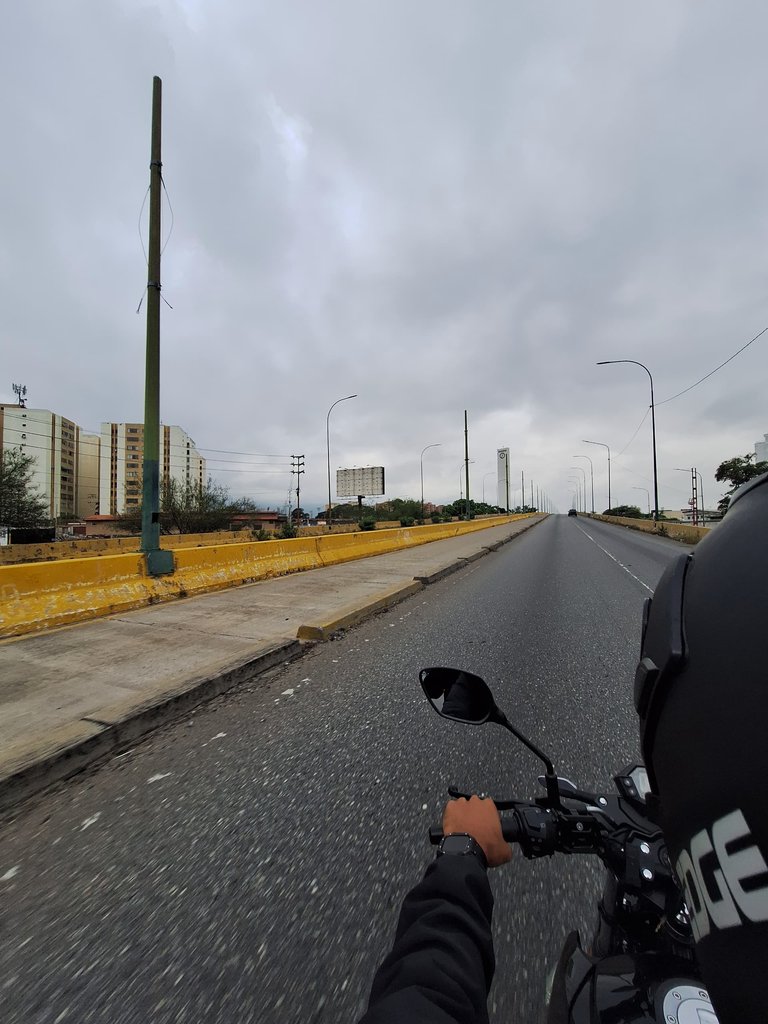 |  |  |
After passing through Quíbor by motorcycle, we took the road to Tocuyo, Sanare. Based on some comments and research I’d done, the road to Sanare is said to be beautiful but dangerous. Driving along it was breathtaking; everything was lush and green since the rainy season had already started.

On the road, the first thing I came across was a colonial-style house that seemed to be abandoned. I really liked the architectural scene. The house was surrounded by tall stone walls. A little further ahead, there was another house built entirely of stone. The design of that house was stunning—spending a night there must be quite an experience due to the cold weather.

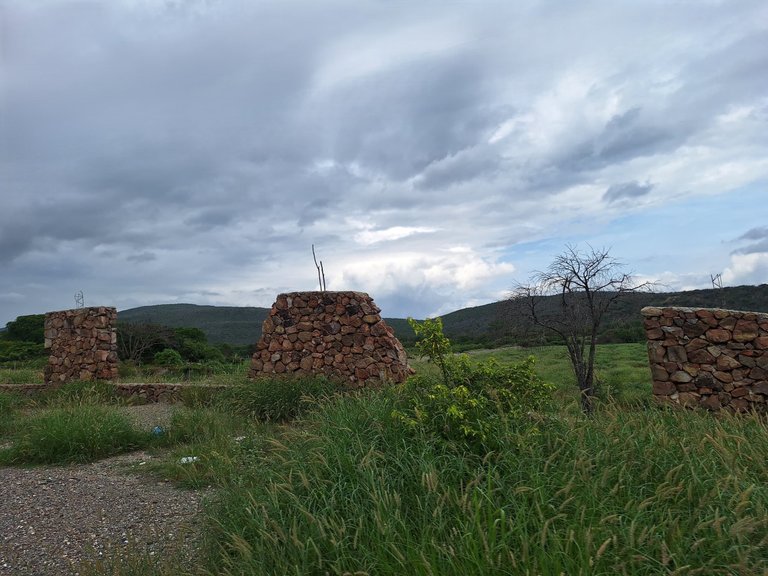
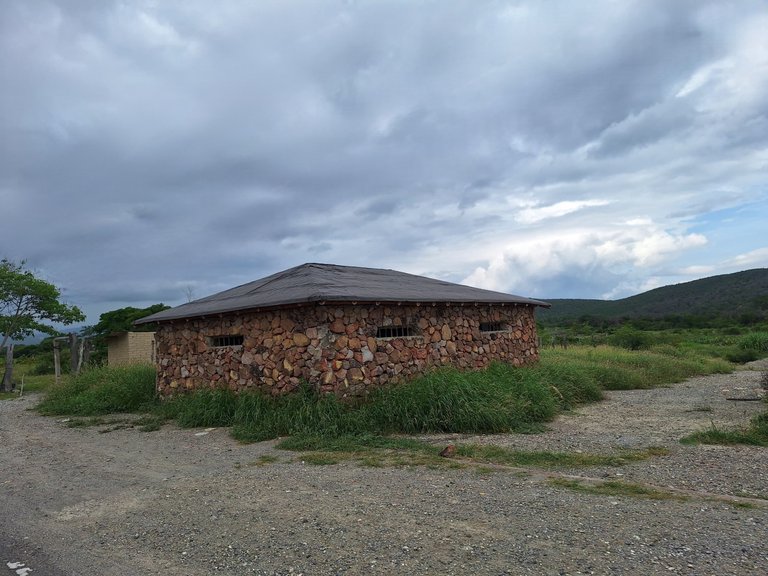
On the way to Sanare, I also saw houses made of adobe bricks. Not everyone has the same opportunities in life—be grateful. From what I could tell, these houses belonged to a farmer.
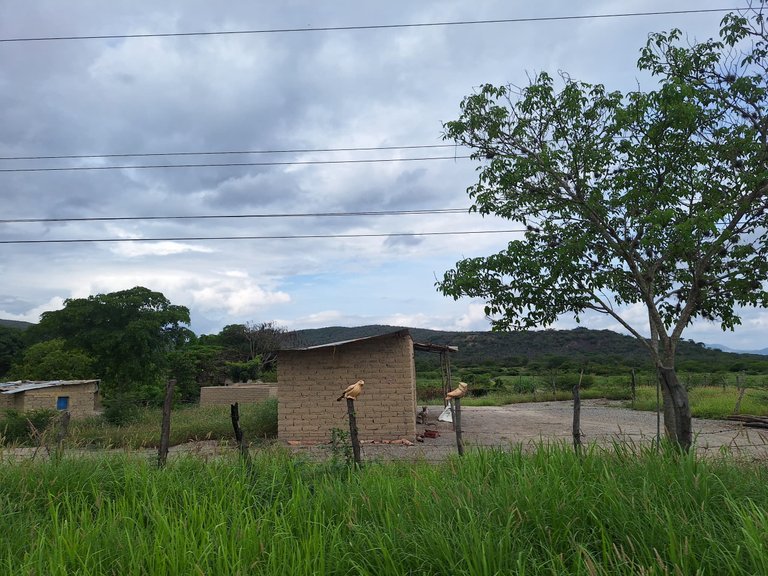
The facades of the houses preserved the colonial and traditional style typical of Venezuelan rural areas. For example, this yellow house perfectly illustrates what I mean. You can even see a sign that says they have a point of sale; there’s a small shop inside. In Venezuela, this is called a “bodega.”
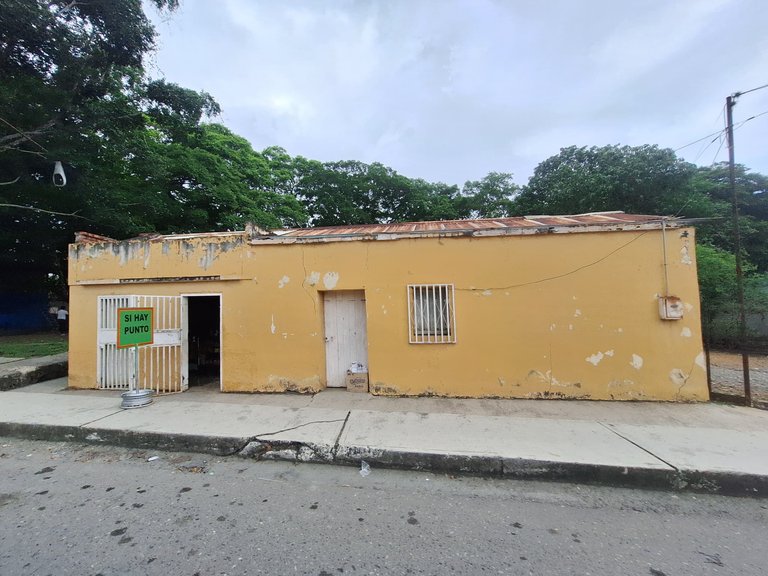
I found this house especially charming. It was beautiful—the pastel colors, the roof tiles, the pillars, and the white-painted ironwork created a lovely urban facade. It had a kind of magical vibe. The only downside was the chaotic web of power lines cluttering the view (those should definitely be buried underground).

At 10:00 a.m. Venezuela time, we were still on the road when it started to rain. We made a stop, hoping it would let up. In that spot, there was an impressive colonial house that looked like it could collapse at any moment.

I decided to get closer and take a more detailed photo. The sky was gray, the green of the trees was intense, and the brown of the adobe bricks and roof tiles darkened with the rain. It had been a while since I’d gotten wet in the rain, but I felt incredibly free.
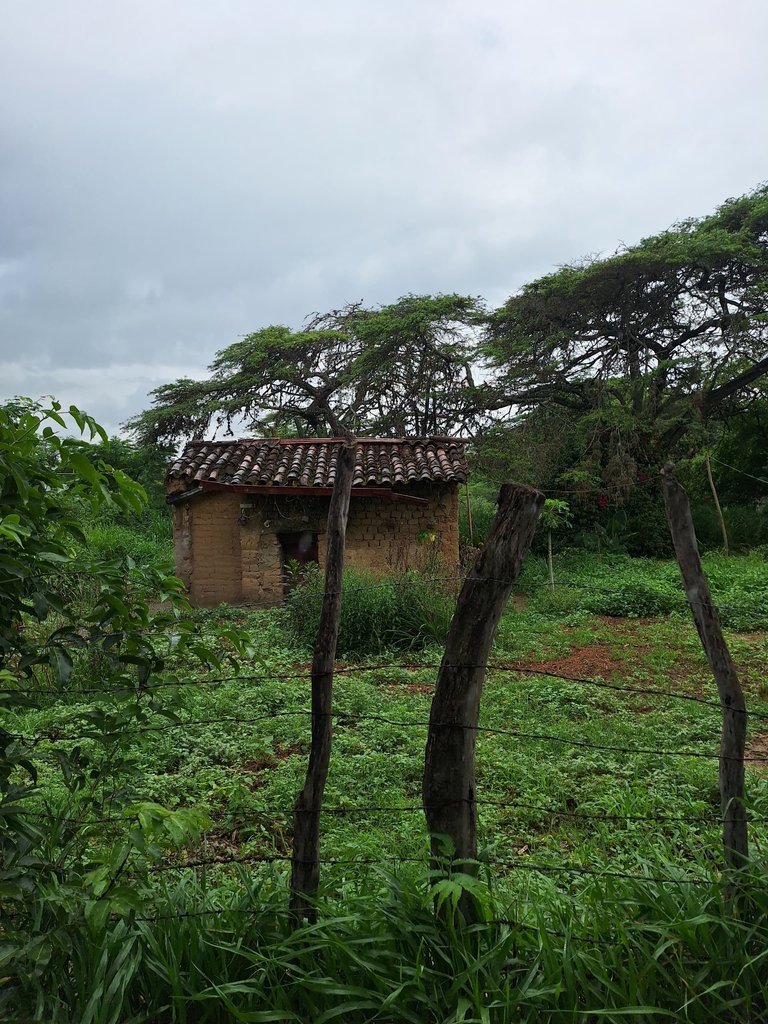 | 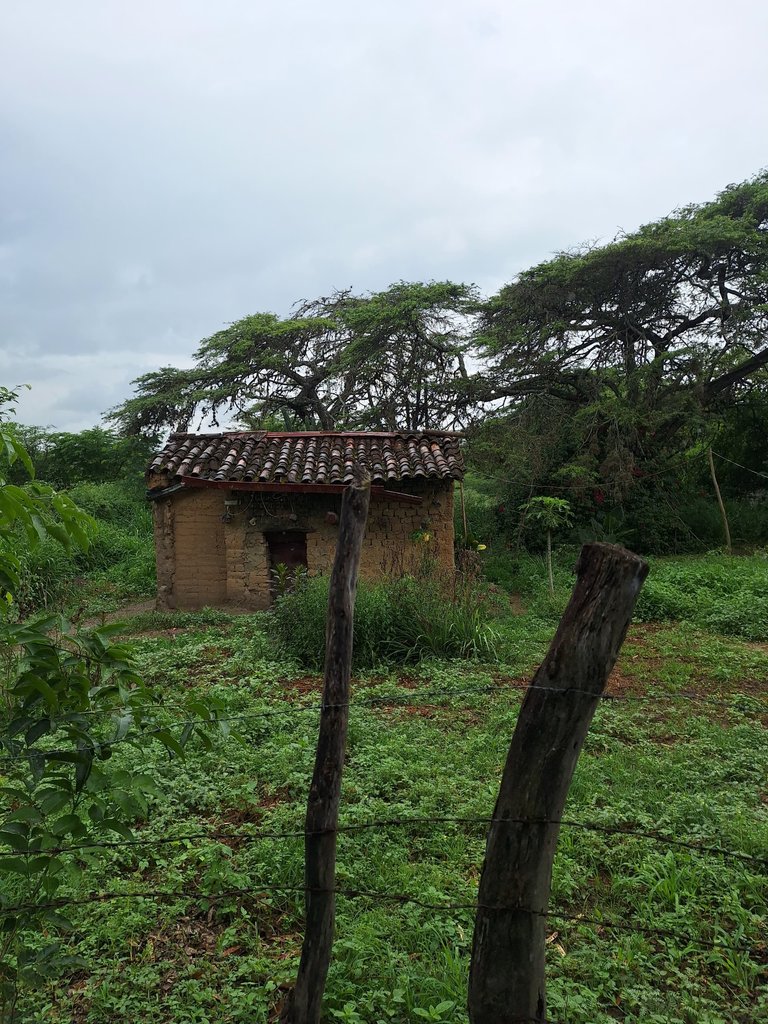 |  |
Here’s another perspective with better lighting. The house was beautiful—clearly not livable, in my opinion—but its design was a form of art. Yes, that’s the best way to describe it.

We decided to hop back on the motorcycle and keep going, even though the rain hadn’t stopped. Farther along, we came across vast stretches of farmland. The fog was incredible—you could tell a storm was approaching. Nature was warning us.
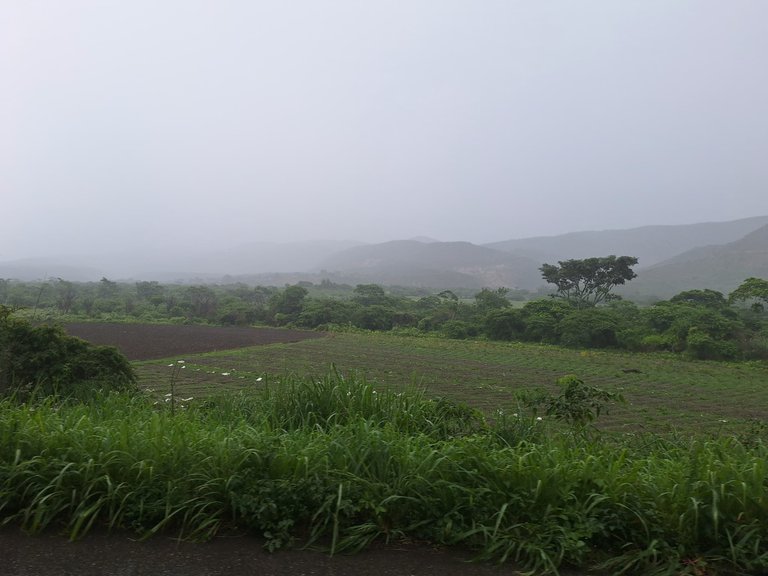
At that point, seeing how the weather was getting worse, we considered heading back to Barquisimeto. But since we had already been riding for over an hour, my brother and I simply decided to keep going and embrace the experience—even if it meant getting soaked. Just look at how amazing this road was. Would you ride a motorcycle through it?

As we continued, the fog got thicker. But when we began ascending the mountains, the view cleared up in some areas. The road to Sanare is full of unique experiences; you pass through the towns of San Antonio, El Molino, Villa Rosa, and Palo Verde.
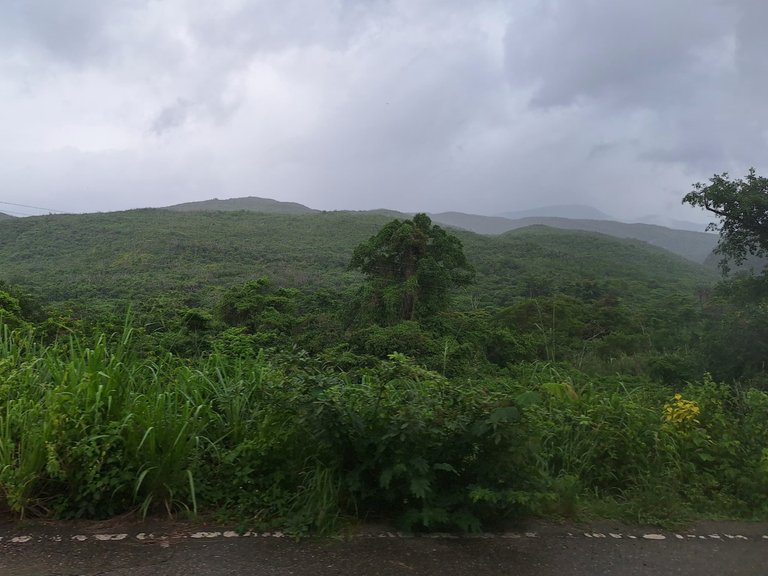
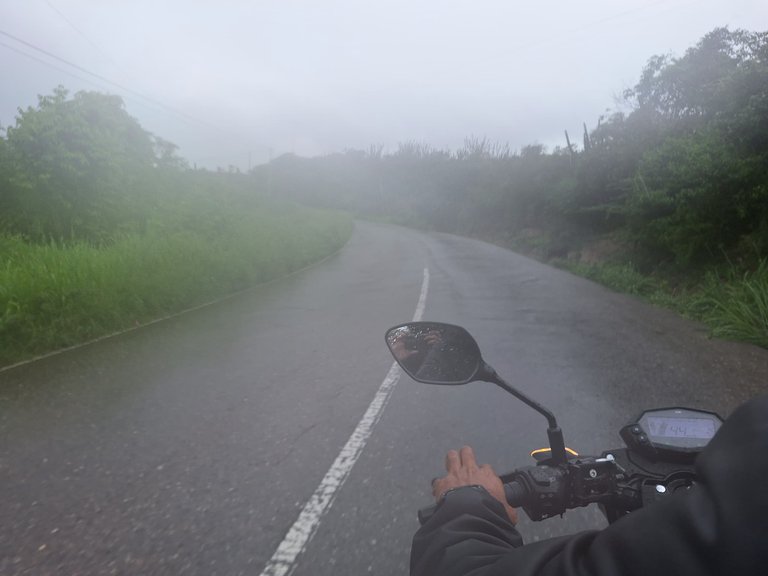
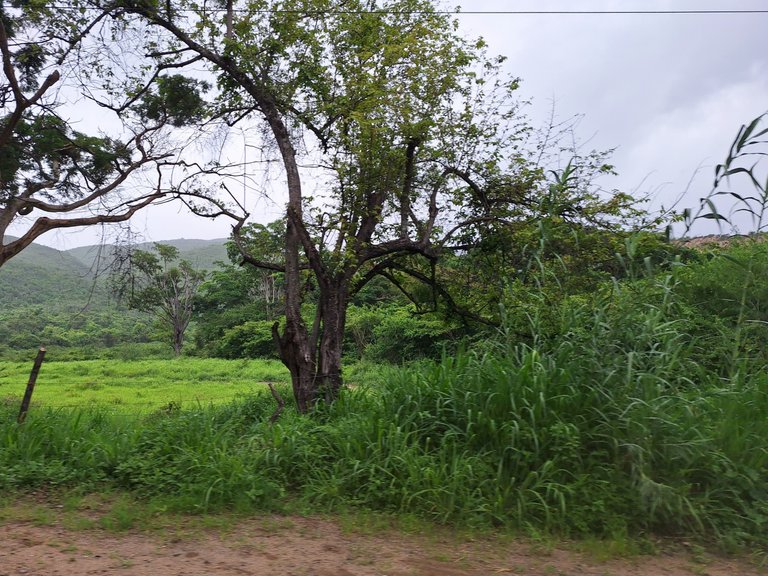
As you climb higher, you start to see the shapes of the mountains. The view is so awe-inspiring, it instantly makes you think: How small I am! I’ll share different photo angles to show the beauty of each mountain.
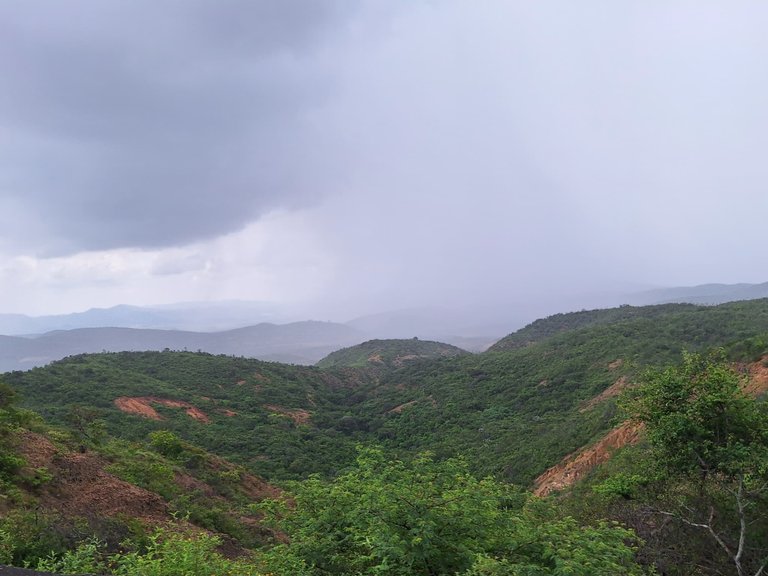

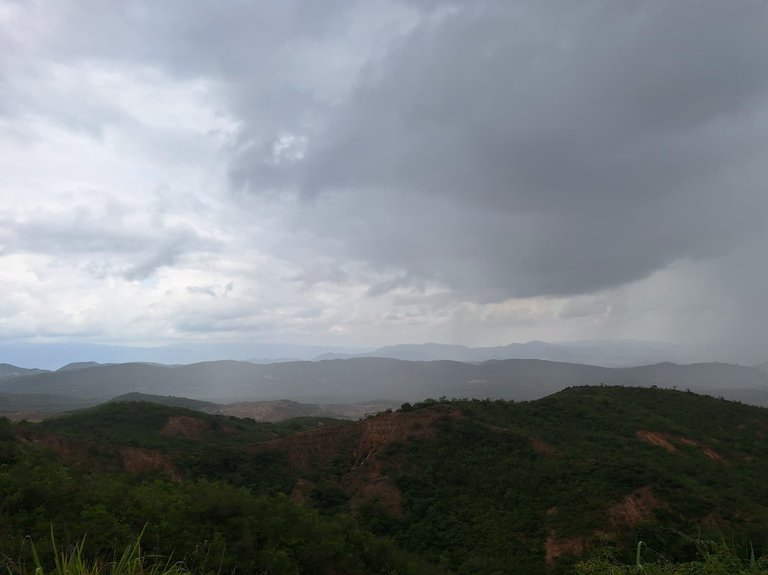
Another view of the mountains. Apparently they are the famous Sanare smelter. Someday I will get to know them more closely, the brown and green color dominate the surroundings. An impressive view.

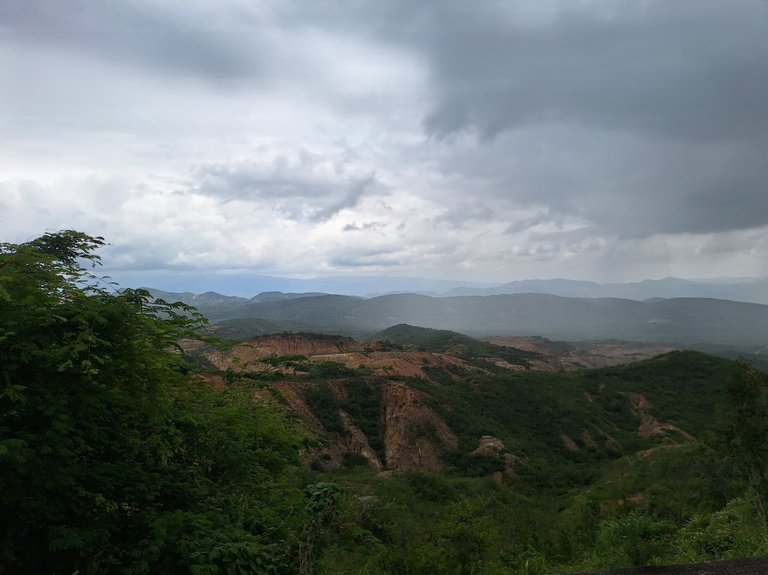
We came across a sign announcing we were getting close to Sanare. I say “announcing” because it referenced the Zaragosa Dance Festival, a traditional celebration unique to Sanare. Many people travel to this town to witness the dance—it's beautiful.

Along the way to Sanare, you’ll see road signs, electric poles, and abundant power lines. Because there’s electricity, there’s also cell signal—something not always available in other parts of Venezuela.

Take a look at this photo and imagine the slope. Climbing that road is quite the challenge, especially in the rain. The 60 KPH sign wasn’t reflective of our speed—we were driving very slowly. The incline there is intense.
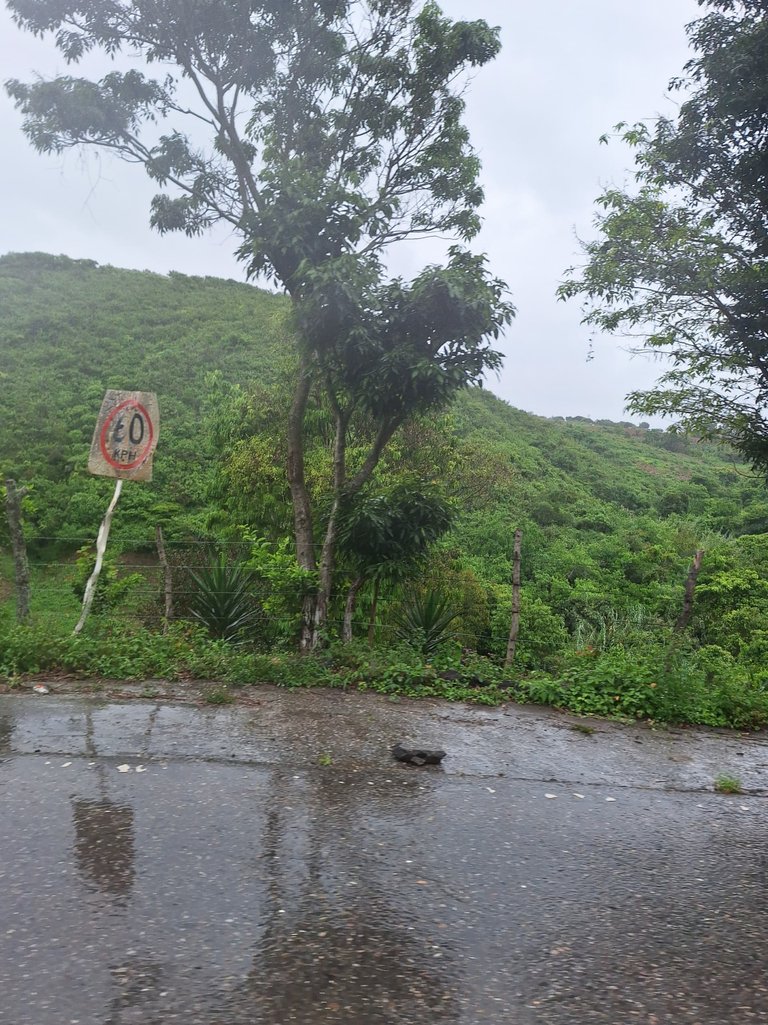
We finally reached Palo Verde, the entrance to Sanare. We stopped at a sort of roadside shelter because the rain got heavier and we needed to check Google Maps. Unfortunately, Maps wasn’t working properly at the time—I believe it was a network issue.
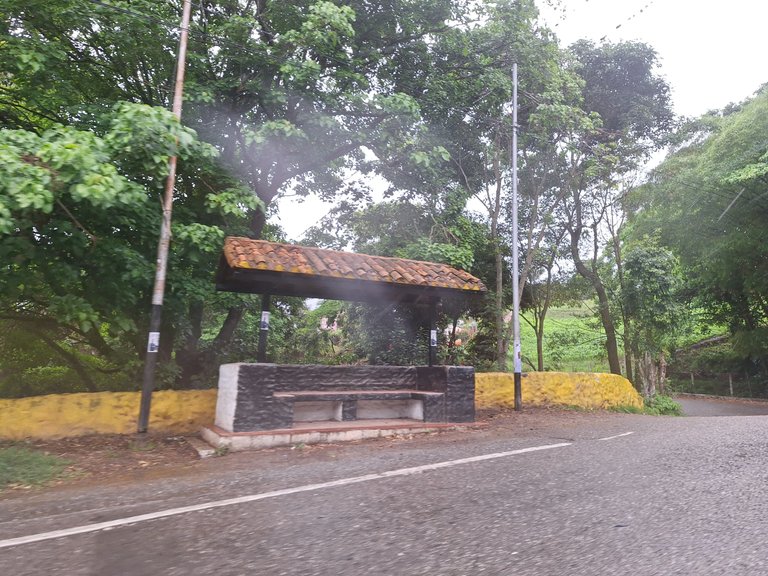
Here’s a photo of a bent road sign. I found it fascinating—despite being damaged, it still served its purpose. It was interesting to see how the natural and urban elements interacted.

Continuing our journey, we finally came across a sign welcoming us to Andrés Eloy Blanco Municipality, where Sanare is located. The sign and the mural were beautiful. I think what I loved most about this place was its essence—the precise design of the walls.
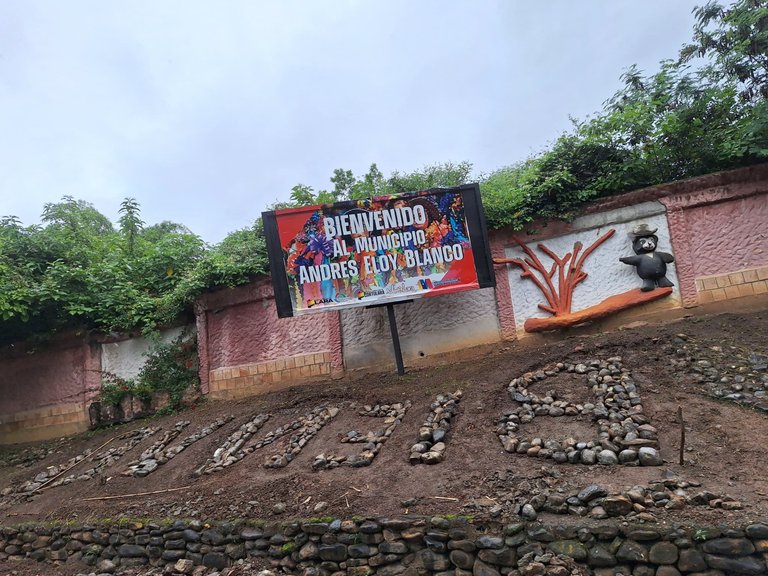
We finally made it to Sanare, a town full of culture, breathtaking views, and countless places to explore. The trip lasted from 9:00 a.m. until 11:12 a.m. Venezuela time. It was a long journey, full of rain-related difficulties, but the mountain scenery and farmland made it all worth it. See you on the next adventure.
Original content by @neruel. All rights reserved ©, 2025. Images: Samsung Galaxy A54. English translation and grammar correction: Chatgpt - DeepL - Languagetool.
SPANISH VERSION (click here!)
Explorando Vía Sanare: Un Viaje entre Montañas
El pasado fin de semana decidí ir de viaje. Este viaje lo había pospuesto por varios asuntos que debía realizar de la empresa y poner al día. El presupuesto del viaje también era holgado: menos de 40 USD (o HBD) para compras, más los gastos adicionales de gasolina y de mantenimiento de la moto (esto fue un presupuesto aparte).
Nunca había ido a Sanare; es uno de los pueblos que deseaba conocer desde hace tiempo. Salí de Barquisimeto a las 9:00 a.m. Pasamos por el icónico obelisco de la ciudad, por Quíbor y los locales de artesanías.
Luego de pasar por Quíbor en motocicleta, tomamos la vía a Tocuyo, Sanare. Según algunos comentarios e investigaciones, la vía a Sanare es preciosa, pero peligrosa. Recorrer la carretera es impresionante; todo estaba verde porque ya inició la temporada de lluvia.
En la carretera, lo primero que encontré fue una casa de estilo colonial que al parecer estaba deshabitada. Me gustó mucho la escena arquitectónica. La casa estaba rodeada por inmensos muros de piedra. Un poco más adelante también había una casa hecha de piedra. El diseño de esta casa era precioso. Dormir ahí debe ser una pasada, debido al frío.
En la carretera a Sanare me encontré también con casas hechas de ladrillos de barro. No todos los seres humanos tenemos las mismas oportunidades; sé agradecido. Por lo que noté, estas casas eran de un agricultor.
Las fachadas de las casas mantienen el estilo colonial y tradicional de los campos venezolanos. Esta casa amarilla, por ejemplo, describe lo que afirmo. Mira, dice que tienen un punto de venta; hay una pequeña tienda ahí. En Venezuela se llama a esto bodega.
Me pareció muy interesante esta casa. Era preciosa; los colores pasteles, las tejas, los pilares y las rejas de color blanco generaban una fachada urbana encantadora. A cierto punto mágico, lo único malo eran los cables que intervenían el espacio horrorosamente (esto debe estar en el suelo de las aceras).
A las 10:00 a.m. hora Venezuela, aún estábamos en la carretera y comenzó a llover. Hicimos una parada esperando que escampara. En ese lugar había una casa colonial impresionante, que parecía que en cualquier momento se derrumbaría.
Decidí acercarme para tomar una fotografía con mayor detalle. El cielo se ve de color gris, el color verde de los árboles es intenso y el color marrón de los bloques de barro y tejas se vuelve oscuro, únicamente por la lluvia. Tenía tiempo que no me mojaba, pero sentí mucha libertad.
Mira otra perspectiva con un poco más de claridad. La casa era preciosa, evidentemente no para vivir en ella. Vivir ahí sería muy difícil, es lo que yo creo, pero el diseño es arte. Sí, esa es la manera correcta de definirla.
Decidimos prender la moto y seguir el camino a pesar de que no había dejado de llover. Más adelante nos encontramos con esta vista de hectáreas de terreno llenas de cultivos. La neblina era impresionante, ya sabes, se avecinaba una tormenta. Era lo que la naturaleza nos indicaba.
En este punto, al ver cómo estaba el tiempo, pensamos en regresar a Barquisimeto, pero ya teníamos más de una hora manejando. Simplemente, mi hermano y yo decidimos mojarnos y vivir la experiencia. Mira lo impresionante que era esta vía. ¿Manejarías en motocicleta así?
A medida que avanzábamos, la neblina era más intensa, pero cuando comenzamos a subir las montañas, la vista en algunos lugares era más precisa. La vía Sanare está llena de vivencias únicas; pasas por los poblados de San Antonio, El Molino, Villa Rosa y Palo Verde.
Otra vista de las montañas. Al parecer son la famosa fundición de Sanare. Algún día las conoceré más de cerca, el color marrón y verde dominan el entorno. Una vista impresionante.
Cuando comienzas a ascender, puedes comenzar a ver la forma de las montañas. La vista es tan hermosa que piensas inmediatamente en esto: ¡Qué pequeño soy! Dejaré diferentes perspectivas fotográficas de la belleza de cada una de las montañas.
Llegamos a un aviso que anunciaba que estábamos cerca de Sanare. Digo que anunciaba porque era sobre la festividad del baile Las Zaragosas (este es un baile festivo de Sanare). Mucha gente viaja a este pueblo para ver este baile. Es hermoso.
Algunos aspectos que encuentras en la vía Sanare son señales de tránsito, postes de luz y cableado de electricidad abundante. Al haber electricidad, hay señal telefónica, algo que en otras partes de Venezuela es imposible.
Quiero que veas esta fotografía e imagines el rango de inclinación. La verdad es todo un reto subir por esta carretera, más si está lloviendo. El aviso de 60 KPH no hace alusión a la velocidad a la que íbamos; conducíamos muy lento. La inclinación es potente allí.
Logramos llegar a Palo Verde, la entrada del pueblo de Sanare. Hicimos una breve parada en una especie de parada porque comenzó a llover y necesitábamos mirar Google Maps. Lamentablemente, Google Maps no funcionaba perfectamente en ese momento; creo que era un problema con la red.
Mira este aviso doblado. Es impresionante porque es una indicación, a pesar de que está doblada. Me pareció increíble cómo se mezclaba debido al comportamiento natural y urbano.
Al seguir nuestro recorrido nos encontramos con un aviso que nos daba la bienvenida al Municipio Andrés Eloy Blanco, donde está Sanare. El aviso y el mural eran preciosos. Creo que lo más maravilloso de este lugar era su esencia. Me refiero al diseño de las paredes, preciso.
Finalmente, llegamos a Sanare, un pueblo lleno de cultura, vistas impresionantes y con muchos lugares que explorar. El viaje al pueblo duró desde las 9:00 a.m, a las 11:12 p.m., hora Venezuela. Fue bastante tiempo y estuvo cargado de dificultades por la lluvia, pero la vista de las montañas y los cultivos era preciosa. Nos vemos en un próximo viaje.
Contenido original de @neruel. Todos los derechos reservados ©, 2025. Imágenes: Samsung Galaxy A54. Traducción al inglés y corrección gramatical: Chatgpt - DeepL - Languagetool.
Posted Using INLEO
You can check out this post and your own profile on the map. Be part of the Worldmappin Community and join our Discord Channel to get in touch with other travelers, ask questions or just be updated on our latest features.
We are back, this time we went on another trip. To the mountains, to see how impressive they are. :)
It was worth getting wet.
Hey @neruel you are welcome.
Thanks for using @worldmappin 😘
Thanks to you. :P
I really enjoyed reading about your ride to Sanare. The way you describe the landscapes, old houses, and that feeling of freedom riding through the rain really brought it to life. It’s inspiring how you pushed through despite the weather and tricky roads.
Riding a motorcycle, getting rained on and seeing everything on the road is awesome. The majesty there is unique. We persevered, because it was really cool, plus I wanted to forget about work hahahaha.
Now that’s living! Rain in your face, wheels on the road, and all the stress left in the rearview. Feels like freedom in its purest form.😅
We must do what we like to do. Enjoy life in our own way.
Agree. We each have our own rhythm, our own way of finding happiness. Have a great weekend. Enjoy!
That's a wonderful place that looks very peaceful on the mountain. Is it rainy or just foggy. Wonderful photograph 👍
It's a beautiful place, it's both. It was raining and because of that there was a lot of fog.
https://bsky.app/profile/did:plc:ga43j6q444olothy33ixk7kr/post/3lptugqsugk2z
https://bsky.app/profile/did:plc:ga43j6q444olothy33ixk7kr/post/3lptugqsugk2z
The rewards earned on this comment will go to the author of the blog post.
Road trip with motorcycle and going into that kind of relaxing place is perfect. Yes! Its really nice to prefer to use motorcycle in going to some places too because you will really see the road and places plus the fresh air indeed! I love your photos and have a safe trip always. Enjoy the ride. Greetings from Philippines.
Traveling this way is amazing, you find yourself and forget about everything. Traveling this way you can see in detail every place. The experience is beautiful. You enjoy the air and the environment in an impeccable way.
Greetings back from Venezuela. :)
I admire your resilience to embrace the rain and challenging road, it's clear the journey was as beautiful as the destination itself. Your vivid description and photos transported me right into your adventure. Always enjoy your travel ahead..
The road is difficult, but not impossible to walk. There are other harder ones that I have walked and arrived. :P The trip was beautiful, the Sanare road is beautiful.
Enjoy life and cherish every moment. :)